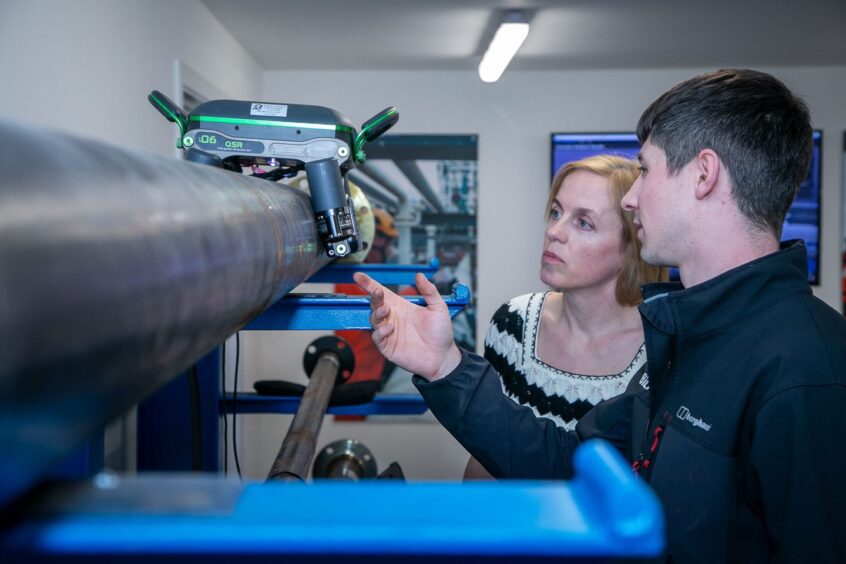
As a keen cyclist in my spare time, I’m used to motivating myself to set new personal best targets to achieve.
Currently, that includes tackling the Bealach Beag event. Located on the west coast of Scotland, the Bealach includes the UK’s biggest road climb with an ascent of 626m from sea level.
Achieving that goal is about overcoming what might initially seem a daunting challenge.
Self motivation, determination and a goal-setting mindset are invaluable in quests like this but also come in handy for my day job.
I’m working across the industry to make sure we realise our ambition to ensure our world-leading UK supply chain is recognised, sustained and capable of driving forward the net-zero transition and supporting energy security.
Therefore, it’s encouraging that we are hearing more and more that there’s growing awareness that our world-class supply chain is one integrated entity that supports oil and gas production as well as emerging low carbon energies.
Through engaging across sectors and our industry, we remain relentlessly focused on informing key stakeholders about our offshore energy supply chain’s capability and capacity plus its transferability and critical role in delivering the UK’s target of net zero greenhouse gas emissions by 2050.
In April we launched a new report that we commissioned from the independent research and business intelligence company Rystad Energy.
In its ‘UK oil and gas supply chain and opportunities in the energy transition’ report, the findings confirm our supply chain companies possess between 60 to 80% of the capabilities required to develop the UK’s low carbon energies.
Rystad Energy’s research highlights that whilst significant growth is expected across the UK’s floating offshore wind farms, new hydrogen schemes and carbon capture projects until 2040, timely and targeted investment will be essential to capture the potential of an estimated £150 billion opportunity.
That inescapable fact underlines the urgent need for strategic action to help supply chain companies seize the potential of a projected 4% yearly increase in spend (real terms) across offshore and onshore activity.
Rystad Energy’s report is firstly a reminder to policymakers and industry that if we can unlock supply chain investment, we can build world-leading businesses for the new markets that will underpin the low carbon energy systems of the future. Secondly, it’s a reminder that strategic investment now will prevent erosion of our world-class capabilities, which have a pivotal role in supporting the build-out of low carbon energies.
Thirdly, it’s a reminder about our voluntary North Sea Transition Deal (NSTD) commitment to local content. This focussed approach to local content, prioritises the high-value UK supply chains that have proven capabilities to deliver technology and services across the energy transition, and which can generate the highest returns for the UK and secure future economic growth in a net-zero world.
OEUK co-signed the NSTD on behalf of the industry with the UK government to set out our sector’s role in reducing emissions from oil and gas production and in delivering the objectives on carbon capture and storage (CCS), offshore wind and hydrogen. It’s an ambitious plan aimed at delivering the skills, innovation and infrastructure required to meet the UK’s net zero climate ambitions.
So, what could the future look like if we get this right? Our existing capabilities- which include expertise in handling high pressure volatile liquids and gases during oil and gas production- could support 84% of spend in CCS. For hydrogen it’s around 80% and in offshore wind our sector’s heritage and experience of operating deep-water projects means we have the capabilities to secure a potential 57% of the Floating Offshore Wind (FOW) market.
Earlier I mentioned that we could build world-leading businesses for the new overseas markets that will underpin the low carbon energy systems of the future. With the right investment environment, our UK offshore energy supply chain could benefit from a significant global export market.
Between 2024 and 2040, the accumulated forecast spend for hydrogen is around £590 billion and £470 billion for CCS. These are much larger markets than those for FOW market, which is still substantial and valued at £100 billion. Our offshore energy supply chain possesses sizeable design and engineering capabilities which, if investment is secured, could benefit from £125 billion of export opportunities over the same period.
These forecasts highlight the significant call for the UK supply chain to scale up to meet domestic demand as well as develop further capabilities in key enabling technologies in CCS and hydrogen. This will be necessary if our supply chain companies are to make the most of the opportunities presented by the energy transition.
To achieve this, companies must see the UK as an attractive country to invest in. Securing investment is essential to preventing flight of our capital, people and supply chains overseas and key to our ability to deliver a homegrown energy transition that has the largest potential to deliver the economic growth our country needs.
Recommended for you

 © Supplied by OEUK
© Supplied by OEUK